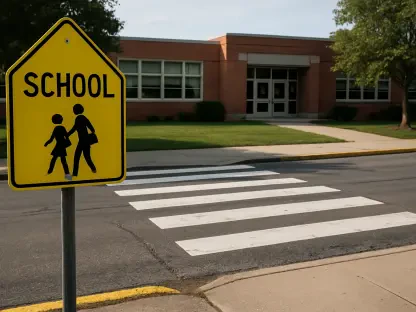In a landscape where higher education faces constant scrutiny over cost, accessibility, and relevance, a recent comprehensive survey offers a refreshing perspective straight from the source—undergraduate students themselves, providing vital insights into their experiences. Conducted as part of Inside Higher Ed’s annual Student Voice series in collaboration with Generation Lab, this extensive study polled over 5,000 students from 260 public and private nonprofit institutions across the country in August of this year. With a margin of error of just one percentage point, the results provide a reliable glimpse into how students view the quality of their academic experiences amidst economic uncertainty, technological shifts, and evolving societal expectations. Far from a simple report card, the findings reveal a blend of optimism and concern, painting a nuanced picture of satisfaction and the challenges that persist. This isn’t merely data; it’s a call to understand what drives student success and where institutions must adapt. From classroom dynamics to personal struggles, the survey captures the voices of a diverse generation navigating college life, highlighting both the strengths of current systems and the gaps that demand attention. As higher education continues to transform, these insights serve as a vital guide for educators, administrators, and policymakers aiming to meet students where they are.
Positive Perceptions of Educational Value
The survey unveils a striking wave of approval among undergraduates regarding the quality of their education. An impressive 80% of respondents rate their academic experience as either good (50%) or excellent (30%), marking a notable rise from 73% in the prior year’s findings. This upward trend spans various demographics and institution types, though private nonprofit colleges slightly outpace public ones in receiving “excellent” ratings, with 47% compared to 27%. Community colleges also stand out, as 32% of their students give top marks, edging out four-year institutions at 29%. Factors such as enhanced completion rates at two-year schools and more personalized attention through lower faculty-to-student ratios at private institutions may play a role in shaping these perceptions. Regardless of setting, the data suggests that many students feel their education delivers meaningful value, a testament to ongoing efforts by colleges to refine teaching and support systems in challenging times.
This high satisfaction rate isn’t merely a statistic—it reflects a broader sense among students that their investment in higher education is paying off. While external pressures like rising costs and economic instability loom large, the majority appear to believe that their institutions are meeting or exceeding expectations in delivering quality learning experiences. Differences across institution types hint at the impact of specific strengths, such as tailored programs or smaller class sizes, which can elevate a student’s sense of engagement and progress. Yet, this optimism isn’t universal, as variations in ratings underscore that not all educational environments are equally transformative. The challenge for institutions lies in understanding what drives these positive views and ensuring they extend to every student, regardless of background or campus type.
Desired Shifts in Classroom Approaches
Students have distinct ideas about how academic environments can better support their success, with many pointing to specific teaching practices as areas for improvement. A significant 45% of respondents advocate for reducing the weight of high-stakes exams—those tests that account for 40% or more of a course grade—arguing that such assessments create undue stress and may not fully reflect learning. Another 40% express a desire for professors to connect course material more explicitly to real-world applications or career aspirations, seeking relevance in their studies. These preferences align with broader discussions in academia about rethinking evaluation methods and ensuring education prepares students for life beyond the classroom. The call for change is clear: students want learning to feel both manageable and meaningful.
Despite these student-driven insights, a gap persists between their wishes and institutional practices. Only 20% of academic leaders, as noted in a related survey, indicate that their colleges actively encourage limiting high-stakes testing, revealing a disconnect in priorities. This discrepancy suggests that while students are vocal about needed reforms, many institutions have yet to adapt their approaches to assessment and curriculum design. As educational landscapes evolve with new tools and methodologies, there’s an opportunity for colleges to bridge this divide by listening to student feedback and experimenting with innovative teaching strategies. Addressing these concerns could not only enhance academic outcomes but also strengthen trust between students and educators, fostering a more collaborative learning environment.
Navigating Technology and AI in Learning
The integration of technology, particularly artificial intelligence (AI), into education is reshaping how students engage with their studies, and the survey shows a largely positive reception. Over 80% of undergraduates report confidence in using generative AI for coursework, a skill often bolstered by faculty who include usage policies in syllabi—41% of students note this guidance, up from 29% the previous year. This growing familiarity with AI tools reflects a shift toward tech-savvy learning environments where digital resources are becoming integral. However, disparities exist, as 20% of community college students and 23% of adult learners aged 25 and older remain uncertain about AI applications, compared to just 10% of younger or four-year college students. These gaps highlight uneven access to training and resources across educational settings.
Institutional readiness to support AI adoption appears limited, adding complexity to the issue. Only 14% of provosts report having comprehensive AI governance strategies in place, while faculty resistance, particularly at community colleges where 49% express hesitation, further complicates integration. This reluctance can hinder students’ ability to leverage technology effectively, especially for those already facing barriers to digital literacy. Addressing these challenges requires targeted efforts, such as professional development for educators and clear, accessible policies for AI use. Ensuring equitable access to technological advancements isn’t just about keeping pace with innovation—it’s about empowering all students to thrive in a digital academic world without leaving anyone behind.
Flexibility as a Cornerstone of Support
Course delivery and scheduling flexibility emerge as significant strengths in meeting student needs, according to the survey results. Approximately 80% of undergraduates indicate that their institution accommodates their schedules either very well (40%) or somewhat well (40%), a finding that resonates particularly with nontraditional learners. Adult students (50%), community college attendees (49%), and those working 30 or more hours per week (45%) express especially high satisfaction, suggesting that many schools have successfully adapted to the diverse demands of modern student life. This adaptability is crucial in an era where balancing education with work and personal responsibilities is a common challenge, and it reflects a growing recognition of the varied paths students take through higher education.
Yet, flexibility alone doesn’t solve all retention issues, as the data reveals nuances among at-risk groups. Only 33% of students who have considered stopping out feel their scheduling needs are met “very well,” a stark contrast to the 48% of returning students who report strong support after a break. This discrepancy indicates that while flexible options are a vital tool, they must be paired with additional resources—such as advising or financial aid—to prevent dropouts and encourage persistence. Institutions that excel in this area demonstrate an understanding that accommodating schedules is just one piece of a larger puzzle in supporting student success. Building on this foundation with comprehensive wraparound services could further enhance outcomes for those most vulnerable to leaving their studies behind.
Challenges Outside the Academic Sphere
Beyond the classroom, non-academic barriers significantly shape students’ ability to succeed, with financial constraints leading as the most pressing issue for 42% of respondents. This burden is even heavier for specific groups, affecting over 50% of first-generation students, adult learners, and those working long hours. Racial disparities compound the problem, as 46% of Black and 49% of Hispanic students cite financial stress compared to 38% of white students. Mental health also looms large, impacting 37% of women and a striking 64% of nonbinary students, far outpacing the 26% of men who report similar struggles. These external pressures reveal how deeply personal circumstances intersect with academic progress, often creating obstacles that coursework alone cannot address.
The ripple effects of these challenges are evident in retention concerns, particularly among students contemplating stopping out, 41% of whom cite mental health as a barrier compared to 30% of those who haven’t considered leaving. This interconnectedness of financial insecurity, emotional well-being, and educational outcomes underscores a critical need for holistic support systems. Institutions must look beyond grades and attendance to tackle root causes like economic hardship and psychological strain, especially for marginalized demographics bearing disproportionate burdens. Programs targeting financial aid, counseling services, and community-building could mitigate these barriers, ensuring that students aren’t derailed by challenges outside their control. Addressing these issues isn’t just about academic success—it’s about equity and access for all learners.
Valuing Human Connection Amidst Tech Advances
Even as digital tools like AI become more embedded in education, the survey highlights a persistent yearning for human connection among students. About 19% identify social isolation as a barrier to their success, a sentiment reinforced by faculty observations of declining engagement in the post-pandemic era. Personal stories and emerging initiatives, such as AI-enhanced advising platforms, illustrate a shared goal of using technology to support, rather than replace, meaningful interactions with peers and mentors. This balance is essential, as students seek environments where they feel a sense of belonging alongside the benefits of modern tools, emphasizing that learning is inherently a social process.
The importance of community isn’t a mere footnote—it’s a fundamental component of educational fulfillment that institutions must prioritize. Faculty concerns about the risk of further isolation through over-reliance on technology serve as a reminder that face-to-face engagement still holds irreplaceable value. As colleges navigate the integration of digital solutions, maintaining spaces for genuine human interaction will be crucial to sustaining student motivation and emotional health. This dual focus on leveraging innovation while fostering personal bonds could define the next era of higher education, ensuring that technological progress enhances rather than diminishes the communal aspects of learning. Striking this balance is not just a trend—it’s a necessity for creating supportive academic environments.
Building on Student Feedback for Future Progress
Reflecting on the insights gathered, it’s evident that undergraduates held a largely positive view of their academic experiences during the survey period, with 80% expressing satisfaction. However, the journey to success was often complicated by financial struggles, mental health challenges, and disparities in access to technological resources like AI. Institutions showed strengths in flexibility and responsiveness for many, yet struggled to fully support at-risk students considering stopping out. The enduring call for human connection amidst digital advancements stood as a poignant reminder of education’s social core.
Looking ahead, the path forward involves actionable steps that build on these student perspectives. Colleges should prioritize comprehensive support systems, integrating enhanced financial aid, accessible mental health resources, and targeted tech training to close existing gaps, especially for marginalized and nontraditional learners. Encouraging classroom reforms, such as reducing high-stakes exams and linking content to real-world relevance, could further boost academic outcomes. Simultaneously, fostering campus communities through intentional engagement opportunities will help counter isolation. By aligning policies and practices with the nuanced needs revealed in this survey, higher education can evolve into a more equitable, supportive space for all students, ensuring that satisfaction translates into lasting success.









